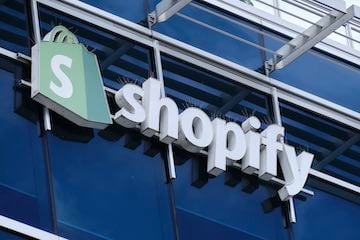Shopify announced earlier this month that it would acquire California-based e-commerce fulfillment company Deliverr for $2.1 billion in cash and stock, marking the largest acquisition in Shopify’s history.
Founded in 2017, Deliverr rents warehouse space and uses the fulfillment services of these warehouses to pick and pack e-commerce orders. Deliverr distributes more than one million orders per month, split between UPS, FedEx and USPS. With the acquisition, Shopify will add 400 employees to its workforce.
Acquisition of the delivery person
One of Deliverr’s strengths is its use of predictive analytics to anticipate demand for products and pre-position them near geographies where needs are anticipated, as well as to determine the best delivery method.
Shopify’s acquisition of Deliver, at $2.1 billion in cash and stock, is the largest in the company’s history.
Shopify says Deliverr will be combined with Shopify Fulfillment Network (SFN), the company’s existing fulfillment service that merchants on its platform use to store inventory and fulfill orders.
Deliverr’s technology will also power Shop Promise, a new service that will offer customers two-day and next-day delivery.
After the acquisition, Shopify will make new inventory storage, freight, and returns processing capabilities available to merchants whether or not they use DFS.
Shopify says it will also roll out a warehouse management system to its facilities by the end of Q2.
In 2020, Shopify acquired 6 River Systems, a warehouse automation technology provider, which will integrate with Deliverr.
In a blog post, Shopify said the acquisition of Deliverr would provide “simplified multi-channel inventory management with one place for merchants to ship their inventory for different sales channels. These include online store from a merchant, physical locations, wholesale customers, marketplaces like Amazon, eBay, Etsy, and Walmart, and platforms like Google, Facebook, Instagram, and TikTok.
Given growing dissatisfaction with Amazon FBA, its changing inventory rules, and rising costs for sellers, Shopify has emerged as an alternative for merchants who prefer to sell directly to consumers through their own websites.
Reflect Amazon
Amazon blunted the advantage of Shopify’s Deliverr acquisition somewhat with the announcement of its Buy with Prime program earlier this month. This service allows a select group of FBA merchants to offer Prime deliveries through their own online stores.
Amazon intends to expand the program to include merchants that don’t use its fulfillment service and eventually businesses that don’t sell on its platform.
Shopify and Amazon will now be competing for the same merchants no matter how or where they sell their products.
Deliverr emphasizes one of its advantages over Amazon FBA merchants – it doesn’t limit the amount of inventory a merchant can store in its warehouses.
Additionally, with the acquisition of Deliverr, Shopify has reduced Amazon’s competitive advantage as Shopify can now consistently deliver within a day or two.
Financial results
While Shopify’s first-quarter 2022 revenue of $1.2 billion was 22% higher than the same period in 2021, it missed analysts’ estimates of around $1.25 billion. .
Shopify’s net loss for the first quarter of 2022 was $1.5 billion, or $11.70 per share, compared to net income of $1.3 billion, or $9.94 per share, for the first quarter of 2021. As a result, Shopify’s stock fell 14.7% to $413.64 resulting in an overall drop of 70% in 2022.
With the acquisition of Deliverr, Shopify is banking on fulfillment to drive revenue and help it return to profitability.
Efficient fulfillment and next-day or two-day delivery are key differentiators when the supply chain is volatile and inventory constraints exist.
Shopify’s forecast for 2022 calls for year-over-year revenue growth to be lowest in the first half of the year and highest in the fourth quarter of 2022.
Almost all major e-commerce platform players have acknowledged that they will not be able to sustain the high growth rates they enjoyed during the height of the pandemic.

